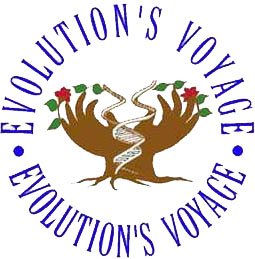
January 1997 Notebook Entries
January 13, 1997...notebook notes
I made a quick visit to NASA's web site and read some background information on weightlessness. I wanted to share my notes with you.
![]() NASA's studies on small animals
do suggest that exposure to microgravity (space flight around Earth) do cause changes in
the developing nervous systems that detect gravity. The vestibular system (inner ear),
parts of the brain that process gravity information, and the neural control of structures
that move the structure appear to be affected.
NASA's studies on small animals
do suggest that exposure to microgravity (space flight around Earth) do cause changes in
the developing nervous systems that detect gravity. The vestibular system (inner ear),
parts of the brain that process gravity information, and the neural control of structures
that move the structure appear to be affected.
![]() We have all seen the affects on
astronauts when they give press conferences after their space flights. We see their
difficulties in walking and standing erect. Fortunately, studies have also shown the
return to Earth reverses the processes as the brain readapts to Earth's environment.
We have all seen the affects on
astronauts when they give press conferences after their space flights. We see their
difficulties in walking and standing erect. Fortunately, studies have also shown the
return to Earth reverses the processes as the brain readapts to Earth's environment.
![]() The speculation that drives my
curiosity is: if these physical changes take place in just a short time, (less than one
year), what would be the effect if the human astronauts were exposed from birth through
mate selection age? (20 years?). Would there be changes in their DNA through chemical
mutations which would then be passed through natural selection? In other words, does the
human brain quickly adapt to local environments; then attempt to make the temporary
adaptations permanent by altering the DNA through chemical mutations; then passes the
alterations through natural selection into permanent traits? In summary speculation: Is
there a process mechanism that we could call upon before natural selection to help us
survive "spikes" in environmental changes?
The speculation that drives my
curiosity is: if these physical changes take place in just a short time, (less than one
year), what would be the effect if the human astronauts were exposed from birth through
mate selection age? (20 years?). Would there be changes in their DNA through chemical
mutations which would then be passed through natural selection? In other words, does the
human brain quickly adapt to local environments; then attempt to make the temporary
adaptations permanent by altering the DNA through chemical mutations; then passes the
alterations through natural selection into permanent traits? In summary speculation: Is
there a process mechanism that we could call upon before natural selection to help us
survive "spikes" in environmental changes?
January 11, 1997...notebook notes
![]() The female of our species are the
guardians of the seed. Through them flows all the genetic instructions of our past, which,
when intertwined with the cultural longitude and latitude, produces the path to the future
that the child she bears will follow
The female of our species are the
guardians of the seed. Through them flows all the genetic instructions of our past, which,
when intertwined with the cultural longitude and latitude, produces the path to the future
that the child she bears will follow
![]() There is greater biological
energy required to produce the female egg in comparison to the human sperm.
There is greater biological
energy required to produce the female egg in comparison to the human sperm.
![]() Since the male perceives the
female as a limited reproductive resource, it appears that the male is biologically driven
to mate with as many women as possible. This creates a competitive atmosphere between
males.
Since the male perceives the
female as a limited reproductive resource, it appears that the male is biologically driven
to mate with as many women as possible. This creates a competitive atmosphere between
males.
![]() The time required to nurture the
egg, give birth to, protect, wean, and teach the newborn child, and still survive in our
ancestral past required that the female carefully choose a male who would contribute the
most to the success of the off-spring.
The time required to nurture the
egg, give birth to, protect, wean, and teach the newborn child, and still survive in our
ancestral past required that the female carefully choose a male who would contribute the
most to the success of the off-spring.
![]() It is these requirements of our
genetic software that produces what we call mating strategies. Darwin called it sexual
selection.
It is these requirements of our
genetic software that produces what we call mating strategies. Darwin called it sexual
selection.
The Five Sexual Selection Strategies
1). The male-male competition for women. (instead of physical battles, the male today accumulates money and toys so that the female will pick him over the other guy).
2). The female choosing the male. (Hired your private investigator yet? Read "The Rules?").
3). Female-female competition for the male. (Stay away from my man you bitch!).
4). Male mate physical preference. (Hey man, check out the bottom on that chick!).
5). Female mate physical preference. (Say girl, check out the thrusters on that guy!).
![]() Mating strategies change with age
and culture.
Mating strategies change with age
and culture.